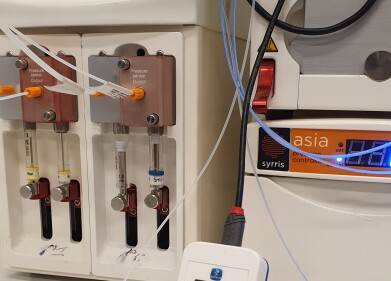Liquid Chromatography
Do Inedible Fish Parts Have Antiallergic Properties? - Chromatography Explores
Aug 30 2020
Traditional medicines are still used in many parts of the world to treat some medical conditions. A recent paper published in the journal Veterinary World has carried out research into one treatment that might be considered unusual in Western medicine – inedible body parts from fish. Let’s take a closer look behind the story in the paper Characterization and identification of charcoal of inedible Kerandang fish (Channa pleurophthalmus Blkr) body parts and potential antiallergenic properties.
Allergy medicine to stop the itch
In Indonesia traditional medicine is still a key component of public health, despite the advances in modern medicine and technology. The use of natural ingredients in many of the traditional medicines used means that there are minimal side effects when compared with many modern medicines. People consider natural and traditional medicines safer than modern drugs. One of the areas where people use traditional medicines is in treating allergies. Rather than turn to antihistamines to reduce the incidence of side effects people turn to traditional remedies.
Allergies, or hypersensitivity is an unnatural immunologic reaction. It is seen in people who have been previously sensitized and produce an antigen that causes a massive immune response that the body cannot control. In mild cases this can be a rash or inflammation of the skin. Some allergic reactions though can result in serious conditions such as anaphylactic reaction, resulting in death. It is the release of mediators like histamine and prostaglandins that cause allergic reactions like rashes and inflammation.
In parts of Indonesia, the Kerandang fish has gained some attention as charcoal can be made from several of the inedible body parts. This charcoal has been used to treat hereditary allergic reactions. The body parts are burnt and turned into charcoal and then smeared on itchy skin. But what is in the charcoal that allows its use as an antiallergy medicine. Can chromatography help to find out?
Can chromatography help find what’s in the medicine?
The study team obtained some inedible fish parts such as scales, fins, and scalps from fishermen in Sebangau Kereng Bengkirai Lake in Indonesia. The fish samples were dried and then burned to produce charcoal in an oven with a maximum temperature of 200°C. Following extraction with solvents such as ethanol, chloroform, and ethyl acetate the samples were washed and dried. The samples were analysed using liquid chromatography and mass spectrometry – the use of chromatography is discussed in the article, Analysis of Polynuclear Aromatic Hydrocarbons (PAHs) in Edible Oil to 0.5 ppb.
The researchers also tested the effect of the charcoal on immunoglobulin E (IgE) with mice. They discovered that one of the active compounds in the charcoal was hexadecanamide and came from caudal fins of Kerandang fish. They found that the charcoal of fish caudal fins could suppress IgE expression in mice. They conclude: Our findings indicate that the charcoal of non-edible body parts of Kerandang and one of its constituents, hexadecanamide, may have strong antiallergic effects.
Digital Edition
Chromatography Today - Buyers' Guide 2022
October 2023
In This Edition Modern & Practical Applications - Accelerating ADC Development with Mass Spectrometry - Implementing High-Resolution Ion Mobility into Peptide Mapping Workflows Chromatogr...
View all digital editions
Events
Apr 23 2024 Kintex, South Korea
Apr 23 2024 Seoul, South Korea
Apr 28 2024 Montreal, Quebec, Canada
May 05 2024 Seville, Spain
May 15 2024 Birmingham, UK













